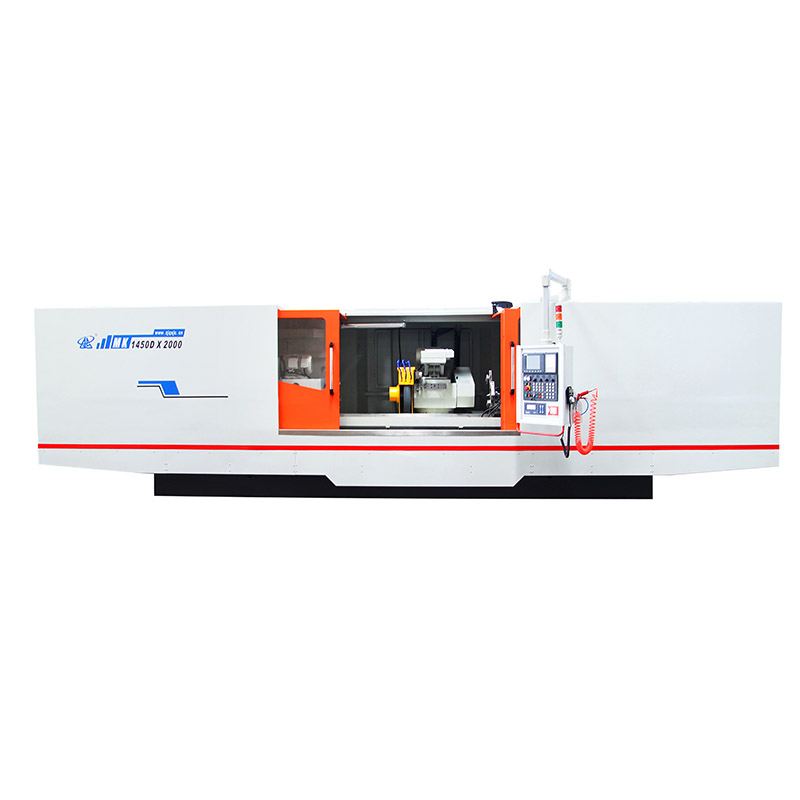Common thin parts such as washers, friction plates, tem […]
Common thin parts such as washers, friction plates, templates, thin plates, etc., due to poor rigidity, difficult heat dissipation, and bending after heat treatment, will cause clamping deformation during clamping, and warp during grinding. Magnetic chuck is usually used for grinding on a surface grinder. After the processing and grinding are completed, the magnetic attraction is removed, and the sheet workpiece is restored to its original state, which is difficult to ensure the processing accuracy. For example, the following clamping methods are used to ensure that the sheet workpiece is positioned and clamped in a free state, and the double-end surface is used for grinding, which can achieve good results and meet the requirements of parts processing accuracy.
A. Clamping method of cushion elastic gasket
When grinding the above-mentioned sheet workpiece on a surface grinder, an elastic clamping mechanism is adopted to enable the sheet workpiece to be positioned and clamped in a free state. A layer of 0.5mm thick rubber is placed between the workpiece and the magnetic worktable. When the workpiece is subjected to magnetic attraction, the rubber is compressed and the elastic deformation becomes smaller, so that the flat surface of the workpiece can be ground. Repeated grinding several times can meet the requirements of machining accuracy. To
B. Mechanical clamping method
Use the flat-nose pliers in the attachment of the surface grinder to suck the thin-shaped workpiece with the magnetic worktable. Because the flat-nose pliers have a certain height, the magnetic force on the jaws is small. Use the method of gradually reducing the feed rate to grind one flat surface of the thin workpiece and then remove it. At this time, put the ground surface on the magnetic table, and then grind the other surface of the thin workpiece, and repeat the grinding several times. , The flatness of the two planes meets the requirements.
C. Use temporary measures to strengthen the rigidity of the sheet workpiece
Using epoxy resin bonding agent, the thin workpiece is glued to a flat plate in a free state. The plate is placed on the magnetic chuck together with the sheet. After the flat surface of one end of the sheet is smoothed, the sheet workpiece is removed from the flat plate, and the flat side is placed on the magnetic chuck, and the other end of the sheet workpiece is ground. Since the epoxy resin has fluidity before hardening, it can fill the gap between the thin workpiece and the flat plate. When the epoxy resin is hardened, the workpiece and the plate are bonded together to form a whole, thereby greatly enhancing the rigidity of the workpiece. Under the magnetic attraction, the thin workpiece will not be clamped and deformed, which creates conditions for grinding a flat surface. Thick grease can also be used instead of epoxy resin to fill the gap between the sheet workpiece and the magnetic chuck to enhance the rigidity of the workpiece, and good results can also be obtained.
D. Vacuum clamping method
Use atmospheric pressure to clamp a thin workpiece for grinding. The working principle is: a rubber sealing ring is arranged on the clamping body, and the sheet workpiece is placed on the rubber sealing ring, so that a sealed cavity is formed between the workpiece and the clamping body. Use a vacuum pump to extract the indoor air from the air extraction hole, and the workpiece is clamped at this time. Due to the small clamping force, the circumferential grinding method can be used for grinding. After grinding the flat surface on one end of the thin sheet workpiece, the above method can be used to grind the flat surface on the other end of the thin sheet workpiece, and satisfactory results can also be obtained.
www.china-quanshun.com
